Master Class with Gerald Appel (Enjoy Free BONUS Risk doctor Options Trading The Hidden Reality)
 Click to enlarge |
|
Join a unique intensive class conducted by a famous money manager who is also a groundbreaking technical analyst and the creator of MACD. Appel conducted his master class on four consecutive afternoons during a Caribbean Traders' Camp - January 2003, and the organization of the video reflects this fact. You are about to enter the world of a recognized master who generously shares his methods, tools, and techniques with a small and attentive group.
Your package will include 4 DVDs, and a CD-ROM with Gerry's handouts in MS Word format together with all the charts he used during his class.
Master Class with Gerald Appel
at the Caribbean Traders’ Camp
Session 1 – DVD 1
Market Indices and Chart Formations
1. NASDAQ Composite and Current Volatility
2. The Long Term Moving Average Channel of NASDAQ
3. MACD Patterns of the S & P 500 Threatening to Break Long Term Downtrend
4. NASDAQ /NYSE Index Relative Strength Favors Nasdaq - Bullish
5. Bullish and Bearish Chart Patterns 1
6. Bullish and Bearish Chart Patterns 2
7. Angle Changes
8. T-formations
9. NASDAQ Composite T-Formations
10. Andrew’s Pitchfork
Session 2 – DVD 2
Moving Average Convergence-Divergence
1. Illustration of MACD Concept
2. Introducing the Signal Line
3. The Basic Buy and Sell Signal
4. Using Divergences to Recognize the Reliable Signals
5. Further Examples of Divergences
6. Comparing MACD to a Price Momentum Oscillator
7. Comparison of MACD and RSI
8. Different MACD’s for Buy and Sell Signals
9. MACD during a Strong Market Uptrend
10. MACD during a Strong Downtrend
11. Treasury Bonds, MACD, and a Strong Uptrend
12. The Stop-loss Signal for an Unsuccessful Trade
13. Using Trendlines to Confirm Buy and Sell Signals
14. Long-Term MACD Signals – The Start of a Bull Market
15. A Long Bull Market – Then the Crash
16. Using Monthly MACD to Define Very Major Trends
17. Using Time Cycles to Confirm MACD Signals
18. Using Time Cycles – 2nd Example
19. When MACD Does Not Provide Timely Signals
20. Four Stages of MACD and the Market Cycle
21. The 1998 Bottom
22. A Bull and then a Bear Market
23. Catching the Lows – the 1984 bottom
24. A Second Example of Bottom Finding
25. A Final Example of Bottom Finding
26. Bear Market Rally, 2001 - 2002
Session 3 – DVD 3
Riding the Market: Strategies to Stay on the Right Side of Market Trends
1. Summary
2. Drawdown Illustrated
3. Some Risk-Adjusted Performance Measures (Higher = Better)
4. “Normal” Risks for Various Investments (not worst cases)
5. Basic Risk Control Strategies
6. Core Portfolio – Designed to Minimize 1–year Losses
7. Four Parts of the Portfolio
8. Core Portfolio Performance History
9. Minimum Risk Portfolio
10. Core Portfolio at Vanguard
11. Core Portfolio with ETF’s
12. Concept of Relative Strength
13. Example of Relative Strength Analysis: NYSE Composite Rises Faster when NASDAQ is Strong
14. Large Cap Value/Growth Model
15. SVX Divided by SGX (monthly)
16. Performance of SVX/SGX Model since 1994
17. Average Performance of Large Cap Value Mutual Funds vs. Large Cap Growth Mutual Funds since 1962
18. Large Cap Value Divided by Large Cap Growth
19. Large Cap versus Small Cap Model
20. S & P 500 Divided by S & P 600 (monthly)
21. Performance of S & P 500/SML Model since 1995
22. S & P 500 Index vs. Average Small Cap Mutual Funds since 1979
23. S & P 600/Cash Timing Model Rules
24. S & P Small Cap/Cash Timing Model
25. S & P 600/Cash Model Results
26. Interest Rates and Stocks
27. Stocks and Interest Rates
28. Results: Rates and Stocks, 1962 - 2002
29. Avoid Sales Loads
30. How is Your Fund Doing?
31. Mutual Funds vs S & P 500
Session 4 – DVD 4
Four Presentations
A - Analyzing the Stock Market with Moving Average Trading Bands
1. Basic Concept of Moving Average Trading Channel
2. Different Phases within the Moving Average Trading Channel
3. Different Phases within the Moving Average Trading Channel (NYSE Composite, monthly)
4. Long-Term Weekly Chart –NYSE Index 21-Week Average, 6% bands
5. Moving Average Channels in a Flat Market Period – 1991-1992
B - Volatility Peaks and Major Market Bottoms
6. The NASDAQ Composite and Historical Volatility, 1970 - 1979
7. The NASDAQ Composite and Historical Volatility, 1980-`1989
8. The NASDAQ Composite and Historical Volatility, 1990-1999
9. The NASDAQ Composite and Historical Volatility,2000-2002
10. Peak Volatility, Subsequent Market Movement
C - The 4 Pillars of Investment Success – Long-Term Growth with Greater Safety
11. Investment Strategies for Uncertain Times
12. Why Safer Stock Funds Work Better
13. Avg % Gain in Winning Months - Avg % Loss in Losing Months Based on Volatility Groups
14. Gain Per Year, Based on Volatility Groups – 20 Years
15. Closed Drawdowns Based on Volatility Groups
16. Fund Rotation Strategy – Performance by Performance Rank
D - The Power of NASDAQ
17. NASDAQ Composite – NASDAQ/NYSE Minus 10 Week Moving Average, 1970-1973
18. NASDAQ Composite – NASDAQ/NYSE Minus 10 Week Moving Average, 1980-1984
19. NASDAQ Composite – NASDAQ/NYSE Minus 10 Week Moving Average, 1997-2002
20. NASDAQ Composite When NASDAQ is Dominant vs. NASDAQ buy and Hold - NYSE Composite When NASDAQ is Dominant vs. NASDAQ buy and Hold
21. NASDAQ Relative Strength Summary
22. Relative Strength with Intermediate Monetary Filter


Risk doctor Options Trading The Hidden Reality

Options Trading: The Hidden Reality
In his groundbreaking options trading book, Charles Cottle, trader, teacher and coach demystifies the options landscape by presenting material previously available only to proprietary trading firms. For the electronic trader, the RiskDoctor presents the tools necessary for putting together a long term and consistently profitable game plan.
The latest revised and expanded edition of the Charles' first two books, "Options: Perception and Deception", and "Coulda Woulda Shoulda", shows you how to think like a seasoned floor trader.
The RiskDoctor has gone further in this book to bring options trading knowledge, and its nuances, to the Retail Trader. The new book kicks off with an understanding of "Synthetics", and how the true nature of an options position can be made easier to comprehend by viewing it in terms of its synthetic equivalent. Through his unmatched insight to "Position Dissection", Charles shows the trader the ease with which almost ANY options position can be reduced to a single trade to offset risk, and/or to take profits.
Book Highlights Include:
- Demonstrations of Position Dissection for improving a trader's sense of what positions to initiate and how to adjust these over time.
- Dissections of limited risk, positive time decay positioning such as Skip-Strike-Flies, Double Diagonals, Straddle Strangle Swaps Double Calendars and Hybrid Hedges such as the SlingShots.
- Introducing Diamontetrics Grids for likely expiration ranges and trading strategy placement.
- Expanded Glossary of Options related Terms
NOTE: Computer Disc image is a representation of the digital pdf file
Completing units:
![]() Master Class with Gerald Appel
Master Class with Gerald Appel
![]() BONUS Risk doctor Options Trading The Hidden Reality
BONUS Risk doctor Options Trading The Hidden Reality
Market Sales Price: $1399,but we sell lot more lower than that to share the opportunity with you!
Serving Professional Traders Since 2008
Once purchased I will email you the files within 20 minutes and not more than 48 hours to your email, if there a delay, please be patience receiving your files
Your Review: Note: HTML is not translated!
Rating: Bad Good
Enter the code in the box below:

 Categories
Categories Information
Information Specials
Specials




-38x38.jpg)

-38x38.jpg)
-38x38.jpg)
-38x38.jpg)
-38x38.jpg)
-38x38.jpg)

-38x38.jpg)



-38x38.jpg)


-38x38.jpg)
-38x38.jpg)
-38x38.jpg)
 Featured
Featured

























 Shopping Cart
Shopping Cart Bestsellers
Bestsellers






-38x38.jpg)































-38x38.jpg)












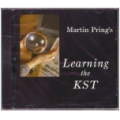


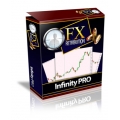


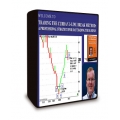

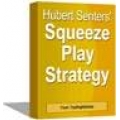



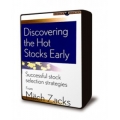
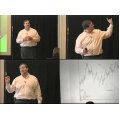
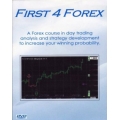
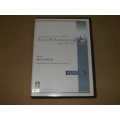

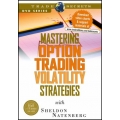







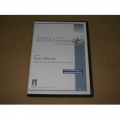






-120x120.jpg)
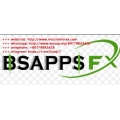
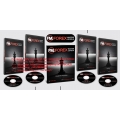

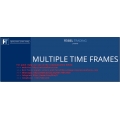
-120x120.jpg)
